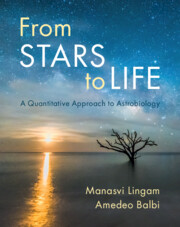Book contents
- Frontmatter
- Dedication
- Contents
- Preface
- Part I Astronomical Origins
- 1 The Foundations of Astrobiology
- 2 From the Big Bang to Molecules
- 3 Planet Formation and Migration
- Part II Earth
- Part III Habitability
- Part IV Astrobiological Targets
- Part V Detecting Life
- Part VI Futures
- References
- Author index
- Subject index
3 - Planet Formation and Migration
from Part I - Astronomical Origins
Published online by Cambridge University Press: 22 November 2024
- Frontmatter
- Dedication
- Contents
- Preface
- Part I Astronomical Origins
- 1 The Foundations of Astrobiology
- 2 From the Big Bang to Molecules
- 3 Planet Formation and Migration
- Part II Earth
- Part III Habitability
- Part IV Astrobiological Targets
- Part V Detecting Life
- Part VI Futures
- References
- Author index
- Subject index
Summary
This chapter elucidates the physical and chemical mechanisms involved in the formation of planets, the conventional abodes of life. The first part is devoted to protoplanetary discs, wherein planet formation unfolds. The topics covered include the minimum mass required for assembling the solar system (minimum mass solar nebula), the thermal and density structure of protoplanetary discs, and the rich chemistry that occurs in these settings. The second delves into the many stages of planet formation starting from the coagulation of dust to the hurdles encountered (e.g., metre barrier) in forming kilometre-sized planetesimals and subsequently to collisions between planetesimals engendering planetary cores and eventually terrestrial planets; a brief description of how giant planets are assembled is also delineated. The final part outlines how interactions between a given planet and its neighbouring gas or planetesimals can contribute to the migration of the former, as well as influence the delivery of water and other volatiles to the planet.
Keywords
- Type
- Chapter
- Information
- From Stars to LifeA Quantitative Approach to Astrobiology, pp. 37 - 72Publisher: Cambridge University PressPrint publication year: 2024

